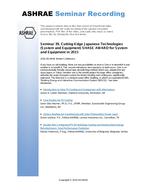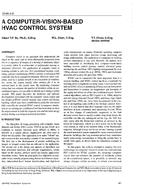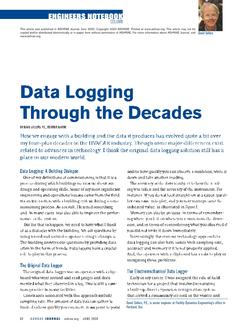Plate fin-and-tube heat exchangers have many applications, not only in the air-conditioning, heating and refrigeration industries, where their use is perhaps most common, but in several other industries as well. In air-conditioning, plate fin surface is used extensively in packaged equipment for residential and commercial applications, room air conditioners, induction and other terminal units, air-cooled condensers, transportation equipment and many others too numerous to mention. In the electrical and mechanical equipment industries and the chemical process industry, plate fin surface is used for a wide variety of heat transfer purposes. Examples are process gas heaters and coolers, compressor intercoolers and aftercoolers, oil coolers, and solvent recovery heat exchangers.
Despite its widespread use, very little basic experimental data have been published for plate fin-and-tube surface. By far the most extensive investigation was the one performed by Shepherd.! Shepherd tested a total of 38 one-row coils, all having expanded 3/8 in. OD tubes, in which the fin spacing, fin depth, tube spacing and location were varied systematically. Over the range from 3 to 11 pins per inch it was found that the heat transfer coefficient, for a given face velocity, increased only slightly with fin pitch. At low velocities, about 200 ft/min, the coefficient ranged from roughly 5 to 6 Btu/hr sq ft (F), whereas at the highest. velocity tested (about 1500 ft/min) virtually no difference in coefficient was apparent. Shepherd also found that the heat transfer coefficient decreased with increases in fin depth and tube pitch, other things being equal. Other data for the air-side heat transfer and friction performance of single row fin-and-tube surface is given by Gebhart2 and Bunge.3 Gebhart compared results for a plain fin with various “relieved” fins (fins containing slots, holes, and tabs) and showed the effect of free stream turbulence on the performance. Bunge gave results for two single-row plate fin coils, arranged one behind the other, with a variable open space between each row.
Published data for multi-row, continuous plate fin surface are virtually non-existent. Kays and London report data obtained from the Trane Company for two multi-row staggered configurations, one having 3/8 in. diameter tubes and the other ~/8 in. diameter tubes. Other data can be found in manufacturers’ catalogues; in general, ;however, these data are presented in terms of overall capacity, and cannot bereduced to the basic parameters useful for design. The purpose of the present pape:r: is to present and correlate data showing the effect of fin spacing on the basic heat transfer and friction characteristics of multi-row plate fin-and-tube heat exchangers. These results repre’sent part of a long-range study which was conducted in the Research Laboratories of Carrier Corporation.
Citation: ASHRAE Transactions, Volume 79, Part 2, Louisville, KY
Product Details
- Published:
- 1973
- Number of Pages:
- 9
- File Size:
- 1 file , 760 KB
- Product Code(s):
- D-LO-2288


